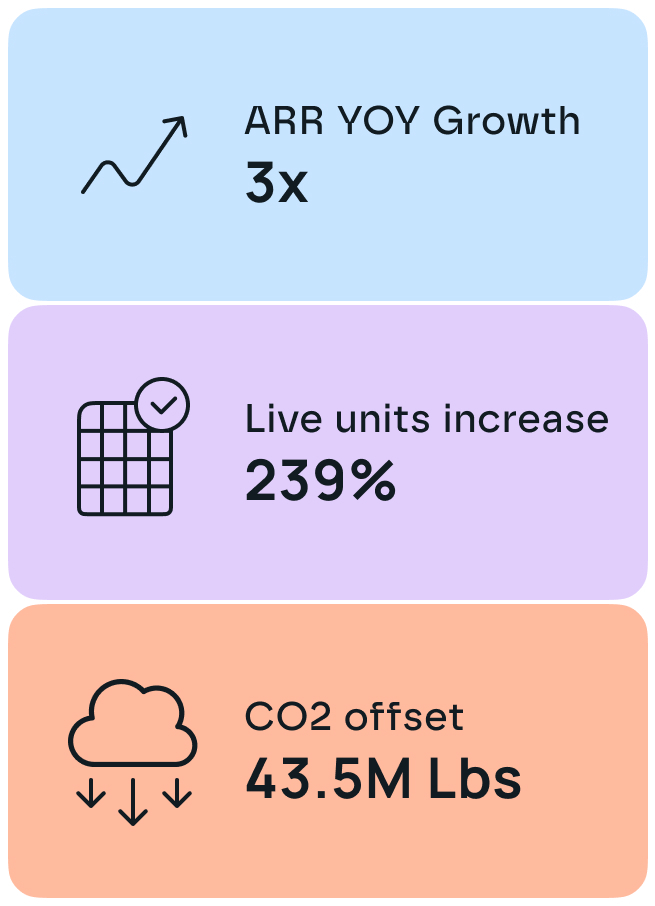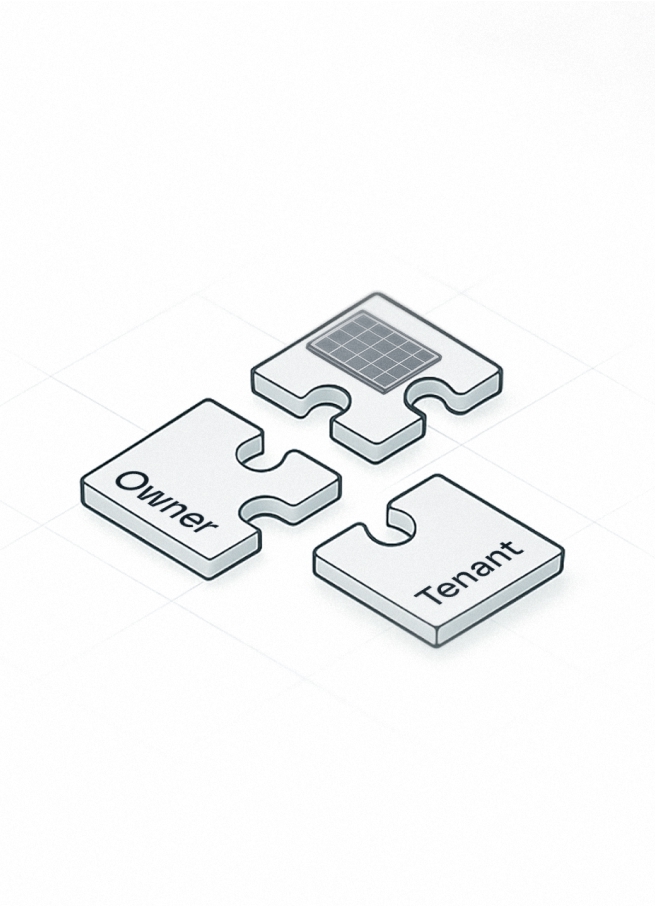Can I offer Solar Energy to my Multifamily Residents?

Whether you want to reduce your reliance on fossil fuels, have heard about the savings of going solar, or your property is now required to add solar power, your next thought is likely, “Can I offer solar energy to my multifamily residents?” The answer is yes, you can legally distribute solar energy to residents. But, when done effectively, you can also generate a new net operating income (NOI) for your multi-family property.
The CA Policy That Makes Multifamily Solar Possible
To understand the benefits of multifamily solar, it’s essential to understand the policies that allow you to offer solar energy to your residents. It is all done in accordance with established California public utility policy (CPUC Code 2868) allowing multifamily buildings to operate as independent solar producers and distribute solar energy to residents.
How Do You Distribute Solar Energy on Multifamily Properties with Multiple Meters?
Multifamily properties can install solar and earn credits for feeding the grid just like single-family properties. For example, a single-family homeowner who installs solar on their home may not use 100% of the solar energy their panels generate. So, the surplus of electricity is fed into the utility’s power grid. The utility tracks this, and the homeowner receives credits on their electric bill. This is called Net Energy Metering (NEM). Calculating the estimated savings from solar and NEM credits is one of the main motivators for homeowners investing in solar, as it shows how long it will take to make a return on their investment. The policy that enables the credits to benefit one system with multiple meters is called Virtual Net Energy Metering (VNEM). While VNEM ensures that you can benefit from offering solar energy to your residents, it doesn’t give you a system or structure on how to optimize the distribution of the solar credits to your residents to maximize your investment. This leaves many multifamily property owners hesitant about offering solar energy to their residents. That’s where Ivy Energy comes in. With our Virtual Grid software, it’s easier than ever before to distribute solar energy to your residents to maximize your investment.
How to Offer Solar Energy to Your Residents
- Work with a Solar Contractor to Determine Your Solar Needs, Run the Numbers, and Install the System.
The great thing is, you don’t have to navigate this alone. We provide complete turnkey solutions from step one! This ensures you start your multifamily solar project on the right foot with our innovative revenue forecasting tools. Also, we have a network of solar contractors that we work with to provide customized solutions based on your property’s specific needs.
- Implement Ivy’s Virtual Grid Software.
While VNEM provides the ability to earn credits for the energy your solar generates, they don’t provide a simple way to distribute the solar energy and accurately bill for it. Ivy’s Virtual Grid is a solar billing software solution that is easy to set up and even easier to manage. The Ivy Energy team designs a custom implementation plan to streamline the onboarding of residents and rollout of your new solar billing program. Once it’s all set up, it is seamless for your property management to maintain. The software handles it all, including:
- Tracks the solar energy generated by your system and your VNEM credits.
- Captures individual meter data.
- Calculates the savings to create a community savings ledger that reserves a portion of the savings for the property owner and passes on a portion of the savings to residents.
- Uses a proprietary algorithm to distribute the resident savings based on actual individual energy usage, instead of the typical flat discount for all residents.
- Provides residents with a simple, accurate monthly solar energy bill.
- Let Your Residents Know About Their Solar Savings!
We partnered with Fairfield Residential, a multifamily real estate company in San Diego, to study the impact of our Virtual Grid Software. 95% of the residents surveyed said they would use solar as a multifamily resident if it cost less than energy from the grid. So, a huge part of the success of your multifamily solar program is showing your residents their savings. With our solar billing software, your residents receive a monthly solar bill that clearly illustrates their energy usage and a comparison of their bill with solar and without solar. A straightforward solar bill that shares the savings secures resident buy-in and your return on solar investment.
Where Does the Additional Net Operating Income Come From?
Before you invest in solar for your multifamily property, we understand that you have to know it makes sense financially. If you go with flat discounts or try to distribute savings by your own calculations, you most likely won’t reap the financial benefits of solar. The Virtual Grid software creates a community savings ledger that shares the energy savings with your residents but also allocates a portion of the savings to you, the property owner.
Depending on your location, this could result in $650 to $1000 per unit in additional NOI.
Your residents will be thrilled to save money on their monthly electric bills, leading to greater retention and referrals. Not to mention, offering clean energy and solar savings to residents can help your property stand out in a crowded market.
Discover a New Kind of Property Income with Ivy Energy
Whether you are just starting your multifamily solar journey or you already have a system installed, we’re here to make sure you don’t leave any money on the table. Our hands-on approach to solar-related public policy, revenue forecasting, and experience with multifamily solar projects makes us your guide to the world of solar. Schedule a demo or request a revenue estimate for your property, so you can take the next step in offering solar energy to your residents today.





